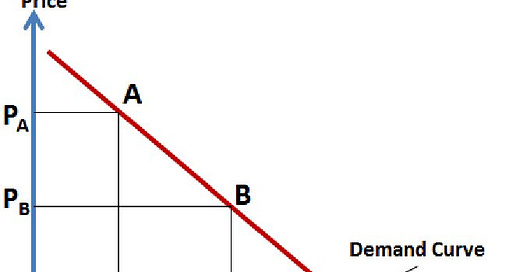Who is not making money in Hollywood? People are consuming a lot of entertainment. Why aren’t key contributors in Hollywood — and why isn’t Hollywood itself — making more money?
Mostly industry structure. But let’s look at it.
The deal for writers used to be better. A successful show might go 22 eps per year. A show runner would get their per ep fee x 22 plus any episodes they wrote on top, plus residuals later. The prospect of going more than a few seasons was real.
Showrunners used to enjoy the prospect of a substantial back end. A strong but not top of market show could go for 5-6 seasons, syndicate and sell DVDs, and 15% of the profits could total $30MM or so. Not “Friends,” which would be bigger, but just a solid show.
Not everyone will make that kind of money but if that’s the top and we work down from there, the formula will make sense for everyone.
Today, if you do 10 eps for a streamer, it’s fewer episodes, per ep rates aren’t compensating for that, residual rates are lower on streaming, and the probability of the show getting cancelled is higher.
Importantly, the syndication and DVD money is not there, so Montecito back end is no longer realistic. This may not be a broadly sympathetic issue but it is not ideal for writers or agents and lawyers. So who is making money? The streamers?
Netflix’s 2021 cash flow was negative and CF for the past five years in aggregate is overwhelmingly negative.
A few writers get amazing deals. And maybe 30, after their streaming success d’estime, will get $2M to $3M for a few years. Obviously some stars make money. Can this get better?
Right now, the value chain is very consolidated into streaming only and streaming itself is a concentrated segment. Streaming has killed DVD and substantially eroded syndication.
When everything is running through one channel and that channel itself isn’t profitable, either the window for that channel is too long (suffocating other channels), or the consumer price of that offering is too low.
Windowing traditionally captured a substantial surplus under the demand curve. One price with an all you can eat structure minimizes value capture and minimizes positive contingent outcomes — i.e., it’s hard to have an economic hit.
If financing and owning content were separated from distribution, as it was from 1970-1993, creators would likely have more leverage and get better deals. Ideally, this process would be decentralized so as to avoid concentration in the segment. What would work best is an open marketplace for funding — think eBay or Kickstarter. It shd also be censorship resistant & therefore on web3 rails. To maximize leverage and ownership for creators, the distribution segment shd be a decentralized permissionless utility where revenues are divided amongst content providers automatically. This is not unlike, or it could be, Lbry.com. There are decentralized content delivery networks that can handle this, such as Livepeer. A DAO would govern the ecosystem, addressing issues such as DRM and front end filtering, and would presumably have a governance token. People could build proprietary clients on top of the open source layer of the streaming service, but these would be competing on a fairly even footing and would be unlikely rent seekers.
Content owners would likely retain IP and could experiment with windows and marketing themselves. In time, more of the demand curve would likely be captured and power and money would be more widely distributed in a manner more favorable to artists than today.
Who would do well in this system? Creators. Their reps. Investors. Creators would have more upside and more control.




